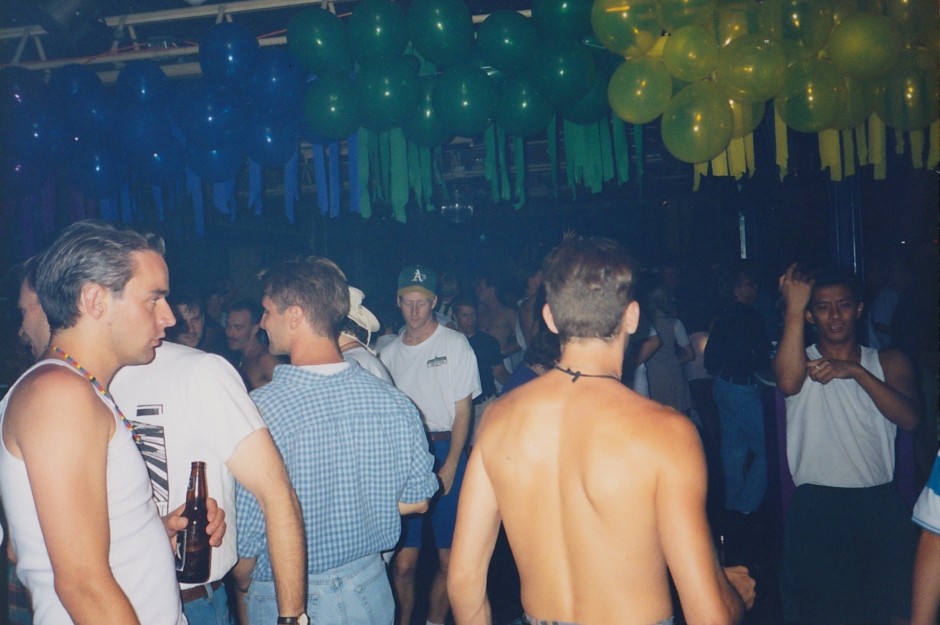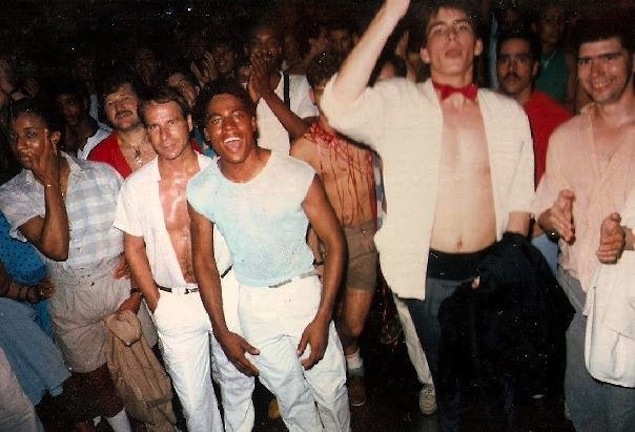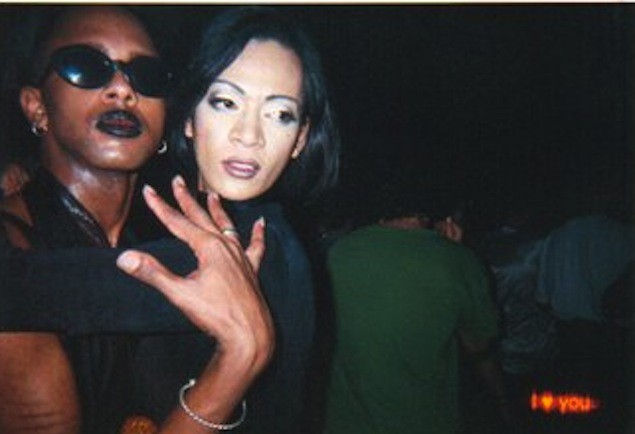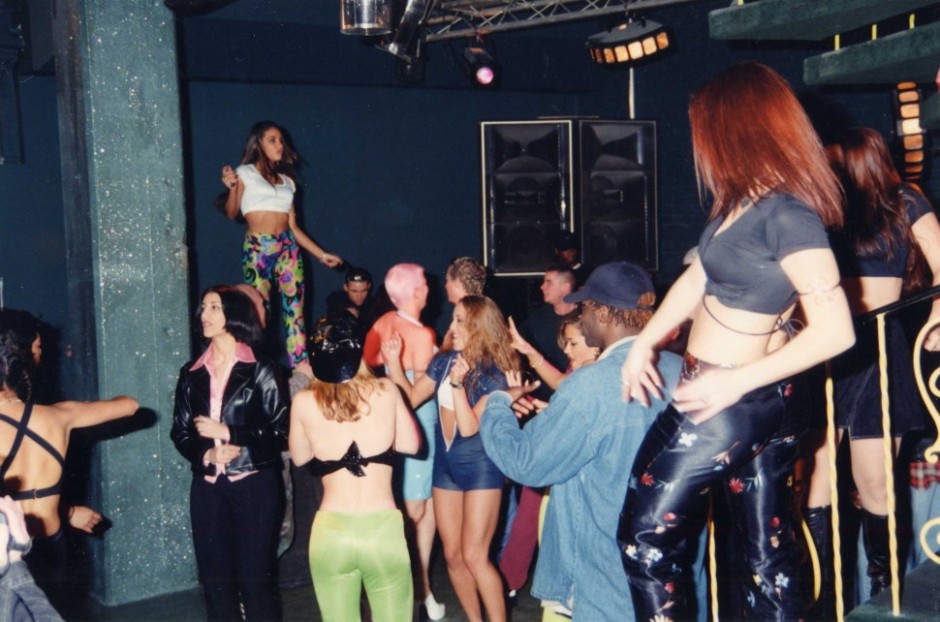The Boots dancefloor during a 1990s Pride weekend event. Photo courtesy of Casey McNeill.
Article originally published September 17, 2013 by The Grid online (thegridto.com).
One of the largest and longest-lasting gay dance clubs in Toronto, this Sherbourne Street super-club went through a number of evolutions as it spurred the local mainstreaming of gay culture during the ’80s and ’90s.
BY: DENISE BENSON
Club: Boots/Boots Warehouse, 592 Sherbourne St.
Years in operation: 1981-2000
History: The story of Boots, one of Toronto’s best-known and longest-lasting gay dance clubs, begins in 1980 at the Waldorf Astoria apartment building. The basement of what was once a hotel at 80 Charles St. E. was rented to a group of men; their first incarnation of Boots proved popular enough that there were noise complaints. The lease was not renewed.
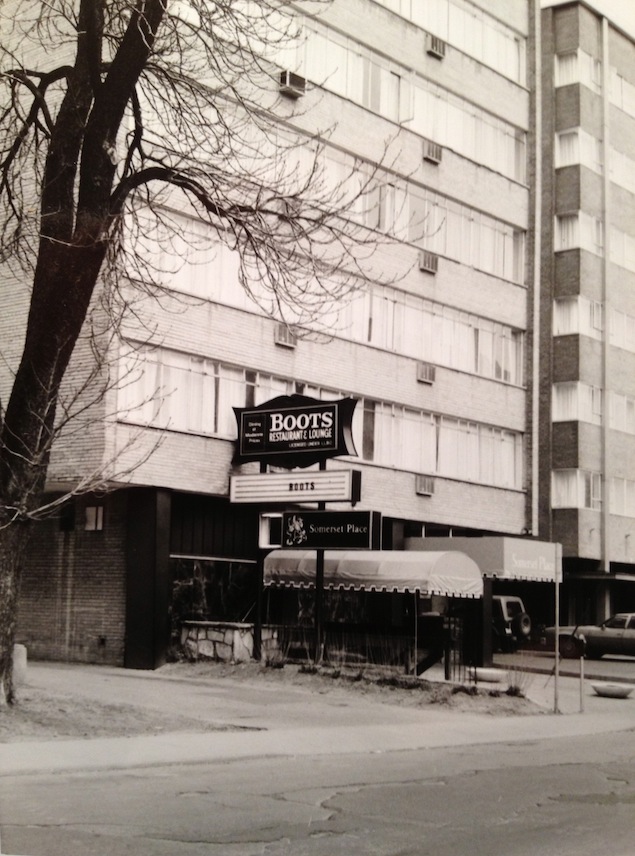
The original Boots on Charles Street. Photo by Joan Anderson,
courtesy of the Canadian Lesbian & Gay Archives.
By late summer of 1981, Boots re-opened in another lower-level location, this time at 592 Sherbourne St., site of the historic Selby Hotel. Once a grand mansion, the building was constructed in the late-1800s, and was home for more than 20 years to members of the wealthy Gooderham family. In 1910, a large addition built on the rear of the mansion opened as Branksome Hall, a private school for girls.

